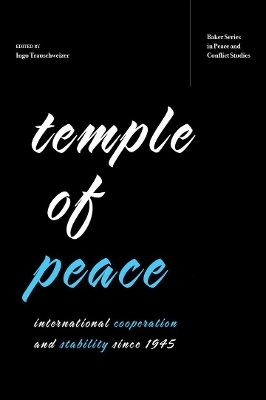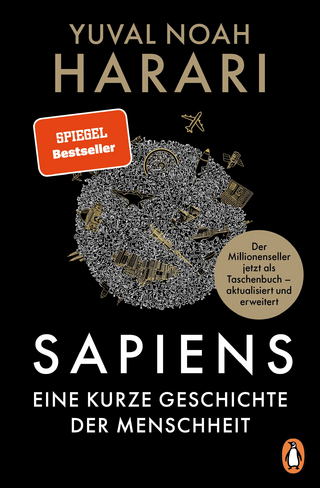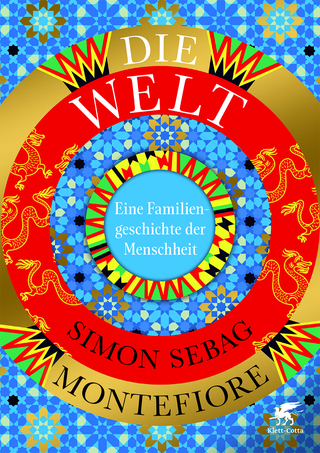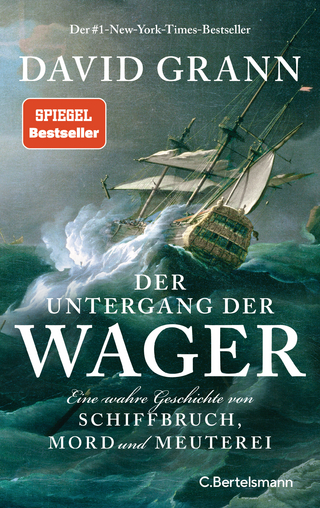
Temple of Peace
Ohio University Press (Verlag)
978-0-8214-2440-7 (ISBN)
This collection raises timely questions about peace and stability as it interrogates the past and present status of international relations.
The post–World War II liberal international order, upheld by organizations such as the United Nations, the North Atlantic Treaty Organization, and similar alliances, aspired to ensure decades of collective security, economic stability, and the rule of law. All of this was a negotiated process that required compromise—and yet it did not make for a peaceful world.
When Winston Churchill referred to the UN framework as “the temple of peace” in his famous 1946 Iron Curtain speech, he maintained that international alliances could help provide necessary stability so free people could prosper, both economically and politically. Though the pillars of international order remain in place today, in a world defined as much by populism as protest, leaders in the United States no longer seem inclined to serve as the indispensable power in an alliance framework that is built on shared values, human rights, and an admixture of hard and soft power.
In this book, nine scholars and practitioners of diplomacy explore both the successes and the flaws of international cooperation over the past seventy years. Collectively, the authors seek to address questions about how the liberal international order was built and what challenges it has faced, as well as to offer perspectives on what could be lost in a post-American world.
Ingo Trauschweizer is a professor of history and former director of the Contemporary History Institute at Ohio University, where he teaches courses on American and global military history, the Cold War, and the Vietnam War. His books include The Cold War U.S. Army: Building Deterrence for Limited War and Maxwell Taylor’s Cold War: From Berlin to Vietnam.
Introduction (INGO TRAUSCHWEIZER)
1. The New Deal as Grand Strategy: Constructing the Postwar Institutional Order (ELIZABETH BORGWARDT)
2. SACEUR as Statesman: Politico-Military Leadership in NATO, 1951–67 (SETH GIVENS)
3 Forgotten Institution: The Role of the OEEC in European Post–World War II Reconstruction and Integration (ARMIN GRÜNBACHER)
4. Shaping Australia into a Neighborhood Power: Decolonization, Vulnerability, and the Cold War (LAURA M. SEDDELMEYER)
5. A “Controlled Revolution”: The UN during the Congo Crisis as Public Stage, Actor, and Incubator for Ideas (ALANNA O’MALLEY)
6. Insurgency’s Three Waves (STEVEN METZ)
7. The Ability to Adapt: NATO’s Statecraft and Europe’s Transformation, 1966–94 (STEPHAN KIENINGER)
8. Russia and the Erosion of the Liberal Order (JENNIFER BRUSH)
9. Erosion of the Liberal Order? (MARY NOLAN)
Postscript (INGO TRAUSCHWEIZER)
Index
| Erscheinungsdatum | 01.04.2021 |
|---|---|
| Reihe/Serie | Baker Series in Peace and Conflict Studies |
| Verlagsort | Athens |
| Sprache | englisch |
| Maße | 152 x 229 mm |
| Themenwelt | Geisteswissenschaften ► Geschichte ► Allgemeine Geschichte |
| Sozialwissenschaften ► Politik / Verwaltung ► Europäische / Internationale Politik | |
| ISBN-10 | 0-8214-2440-8 / 0821424408 |
| ISBN-13 | 978-0-8214-2440-7 / 9780821424407 |
| Zustand | Neuware |
| Haben Sie eine Frage zum Produkt? |
aus dem Bereich


